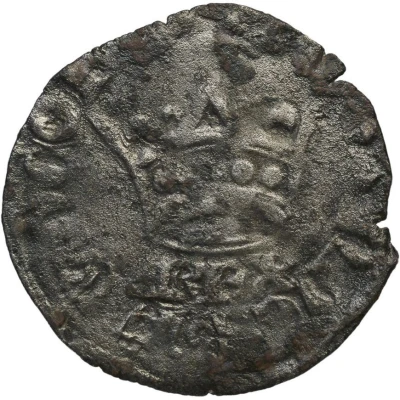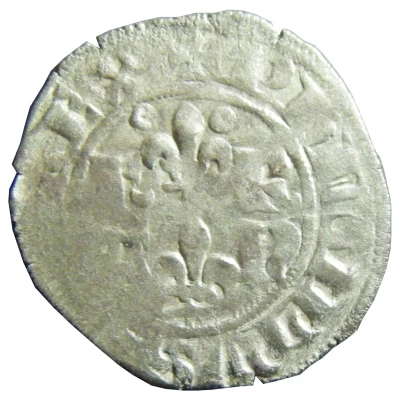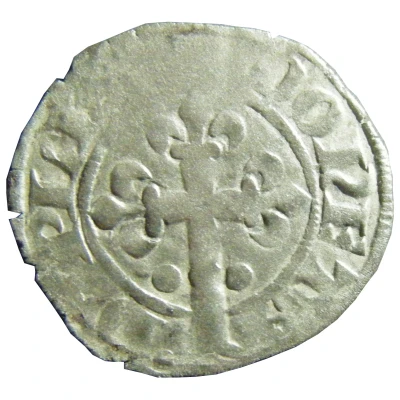


© Bibliothèque nationale de France / Gallica
Double tournois - Jean II ND
| Billon | 1.35 g | - |
| Issuer | France |
|---|---|
| King | John II (Jean II) (1350-1364) |
| Type | Standard circulation coin |
| Years | 1350-1364 |
| Value | 2 Deniers (1⁄120 LT) |
| Currency | Livre tournois (1204-1795) |
| Composition | Billon |
| Weight | 1.35 g |
| Shape | Round (irregular) |
| Technique | Hammered |
| Orientation | Variable alignment ↺ |
| Demonetized | Yes |
| Updated | 2024-10-04 |
| Numista | N#384255 |
|---|---|
| Rarity index | 97% |
Reverse
Latin cross recrossed whose three upper arms are fleurdelisés.
Script: Latin (uncial)
Lettering: ✠ mOnETA DVPLEX
Lettering (regular font): ✠ MONETA DVPLEX
Interesting fact
The Double Tournois coin was used as a means of payment during the reign of King Jean II of France, also known as Jean le Bon, who ruled from 1350 to 1364. It was made of billon, a type of alloy that consists of a mixture of silver and copper. Despite its small weight of 1.35 grams, the coin was widely accepted as a medium of exchange during that time. It's interesting to note that the Double Tournois coin was used during a time of economic turmoil in France, marked by high inflation and currency devaluation. Despite these challenges, the coin remained a stable means of payment and was widely used in trade and commerce. I hope you find this information helpful and interesting!



